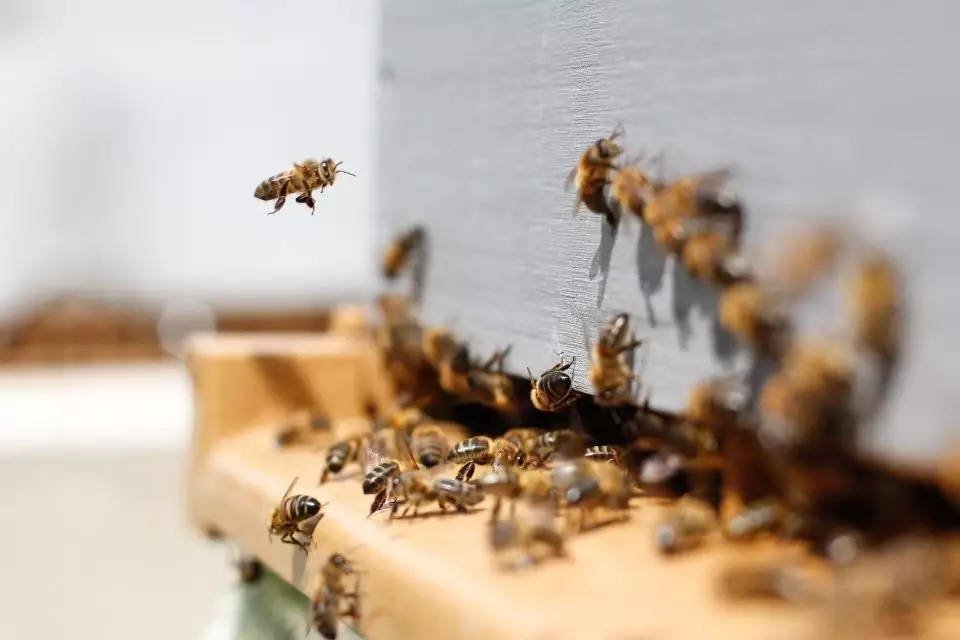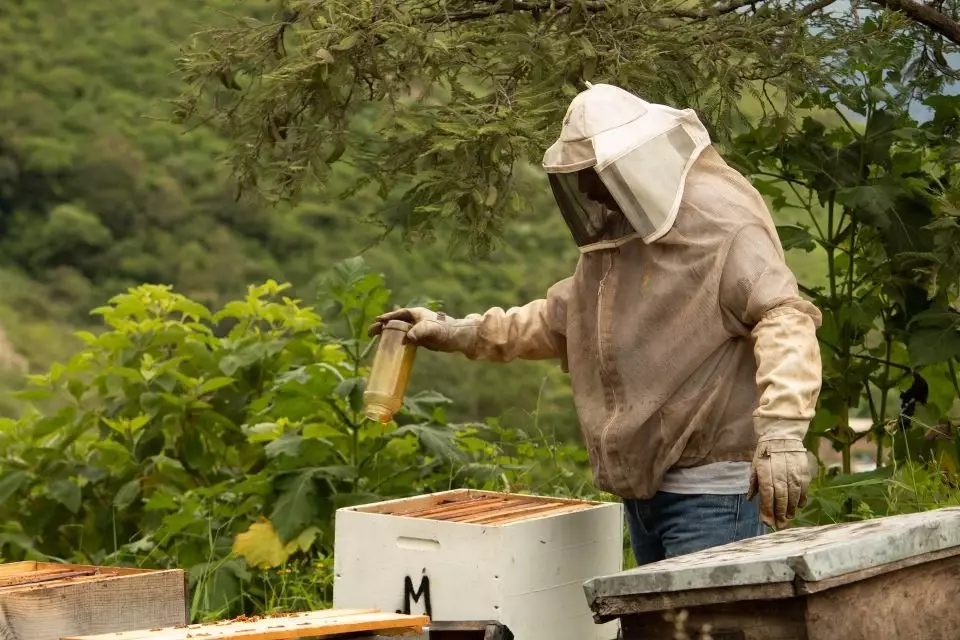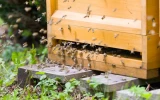How Long Can Bees Be Locked Up? (When Moving a Hive)
Moving a whole beehive is a delicate process, and it should be done carefully. There is a lot to consider, and part of the process of moving is locking them up. But how long can they be locked up?
The bees should not be locked up for more than one day when moving a hive. If the move takes more than a day, be sure to plan stops along the way for them to rest and recuperate. Locking them up for a maximum of three days causes stress and aggression due to feeling threatened or confined in a small space.
Make sure that you plan enough time for stops along the route, as well as provide enough food and water for the bees. We have to remember that bees need sustenance to stay alive, and so it's important to provide them with enough.
Summary
- Bees can be locked for a maximum of three days.
- Depending on the temperature, you can lock bees for days, however it may cause some stress to the bees.
- If you're planning on moving bees, locking them is best, but make sure to keep the distance short and to provide enough food for them.
- Consider providing ventilation when locking the bees, as this will help keep stress levels low.

On this page:
Locking Up the Bees When Moving a Hive
During the moving of the beehive, sealing the whole hive is necessary for their safety and yours. As mentioned, moving can be very stressful for the bees, so it's important to lock them up to avoid swarming and other dangers.
If you're using a regular modern hive like a Langstroth box, then the most important part of it is to seal the entrance and any holes that the bees may have created.
Checking for cracks, holes, and notches in the sides of the hive is also a must before sealing it up. It's best to fix them as well to prevent bees from escaping during travel.
If you're using a traditional beehive, then it will most likely come with a roof that can be easily sealed shut. Before doing so, it's important to make sure that you don't leave any holes or gaps in the roof where bees may escape.
In either case, making sure that you inspect the hive thoroughly before sealing it up and during travel is also a good idea. Depending on how far you're planning on moving the bees, locking them up longer is inevitable.

What Really Happens When Bees Are Trapped
In a natural instinct, trapped bees will be looking for a way to get out. That includes searching for holes, checking between the walls, and even looking for a way out of the top.
Being trapped in such close quarters can be very stressful and make them more aggressive, which can lead to swarming. Swarming is when a large number of bees swarm out in search of a new home, which could potentially be dangerous for you and anyone else in the area.
It's best to avoid swarming and other aggressive behaviors if there's a chance, and not let them be trapped longer than necessary.
On the other hand, the worst-case scenario would be their death if they had been locked up for days with no food or water. Make sure that when you lock them up, it will be cold enough that they don't overheat, and ensure that you plan enough stops along the route to give them food and water if necessary.
Can You Move a Beehive in One Day?
It is possible to move a beehive in a day if you're planning on relocating them somewhere near, and that would be less than 3 miles or 30 feet.
Even though this distance is quite short, it's still best to take any precautionary measures in the process of moving them from one place to another. In fact, it's ideal to only move hives short distances so that they won't become stressed and aggressive throughout the move.
Take a few stops along the way, checking for any cracks or holes in the hive, and be sure to move them during their inactive hours to avoid any unwanted behaviors.
Remember that the ultimate goal is to ensure safe and smooth travel for the bees, so make sure you take the necessary measures before and while you move your beehive.

Tips On Moving a Beehive
When you move a beehive, it's not only the bees who'll experience stress, but also the beekeeper. So it's important to plan ahead and make sure that you have everything ready before you move your beehive.
Here are a few tips that you should consider before moving your beehive:
Check the hives for any defects or holes
As mentioned, even though you're only planning to move your hive a short distance, it's still essential to check for any defects or holes in the hive before you move it. It will save you a lot of trouble during the moving process as we try to prevent any unwanted behaviors from the bees.
Make sure to check between the walls, cracks on the sides, and any ventilation holes. If you find any, make sure to fix them before you move the hives.
Have the right gear
Make sure that you have the right equipment and protective gear before moving the bees. This includes a bee suit, gloves, and a hat/hood. It's also best to have a smoker ready to use if you encounter any aggressive behaviors from the bees.
Plan your route ahead of time
Before relocating your beehive, make sure to plan your route ahead of time. This will help you move the bees in a more efficient and stress-free manner. Planning can also help eliminate making the bees locked up for hours and days, even when they've been transported a short distance.
If you're transporting your beehive in a trailer, make sure to have the right equipment and tools that you need for the move.
Check the weather before you move
This is often neglected, but is one of the most important things to consider when you move your hive. Make sure to check the weather before moving your beehive, so that you're sure that they won't be exposed to extreme temperatures throughout the journey.
Moving your beehive to too hot or cold temperatures can be dangerous to the bees and might even cause them to die. It's best to move them during cold temperatures, when they will be busy warming up and have fewer opportunities to fly out of the hive.
Split their moving per feet
For bees not to get stressed, you can also try to split the move per foot. This means that instead of moving them all in one go, break it down into smaller distances. This will make them feel safer and more comfortable during the move.
For example, if you're moving them 30 feet away, break the distance into 5–6 feet a day. It would take some time, but it would definitely be more beneficial to the bees.
Provide food and water

Before you move your beehive, make sure to provide them with enough food and water. This will ensure that they have enough energy to survive even after the relocation.
Also, make sure that you have enough food and water in their destination area so that they don't have to rely solely on the food and water from their original location.
Clean up afterward
Once you've successfully moved your beehive, make sure to clean up the area and dispose of any track of their previous location. Bees also rely on scent to determine where their hive is located, so make sure that there aren't any scents left behind.
By following these steps, you should be able to move your beehive successfully and without much stress on the bees. Of course, you should also take all necessary safety precautions to protect yourself from bee stings. With the right preparation, you can move your beehive with ease.

